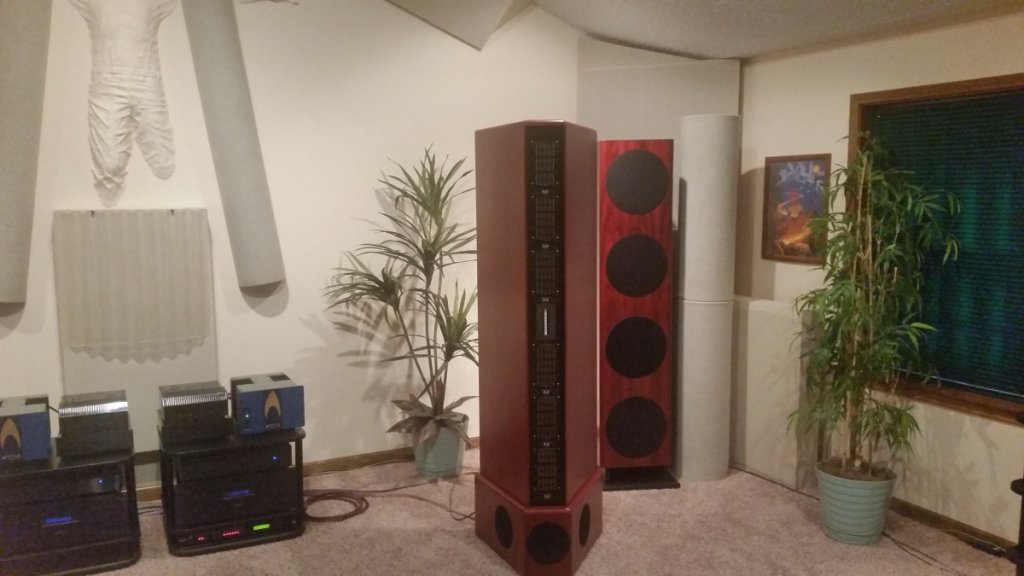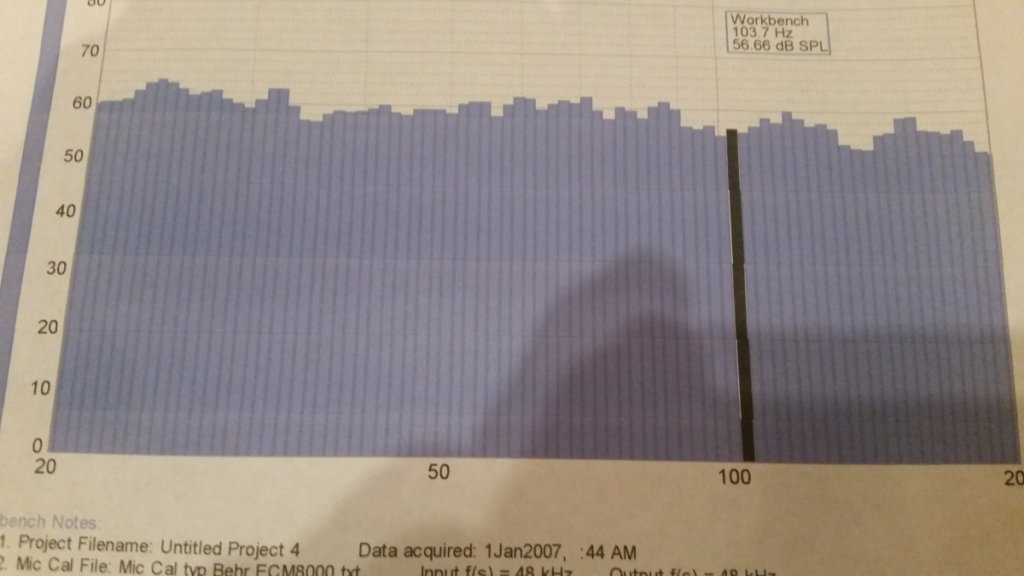I understand the caution needed to not overly dampen the room of the needed higher frequency reflections. In fact very recently I had visited a friends room and enjoyed the added sparkle that his system had over mine. It is a lively room though with a high efficiency horn system, a completely different animal than mine. When I came home to listen I realized that his extra sparkle came at the price of having a reduced overall black level between and around the notes. That black level as I call it is a hard one to properly define, but I find it very important in recreating that virtual soundstage. A large part of that does come from reducing various power supply noise especially in digital transmission, but also with room acoustics.
Still, I wanted to add some of that sparkle back into the room without sacrificing any of the attributes that I love about my room. So I played around and rearranged some of my room treatments. My speakers are dipoles. I had a tall double stack of tube traps against the wall behind each one. I pulled them out and set them to the outside of the bass columns reflective side out. I also added in a 2' x 2' square of transparent corrugated plastic roofing sheet to cover part of an absorptive bass trap that is center on my front wall. Those two small changes gave me back some of that sparkle without loosing any of my black level that I worked hard to achieve.

An interesting byproduct that I was not expecting was that the bass was also positively effected. While already being all that I felt it should be, it became even more so. I had considered adding an outer reflective barrier to my front broadband corner treatments. All I would need to do is remove the outer 3' x 8' decorative screen and face the rigid fiberglass. But, as you can see in the photo that the tube traps are already reflective side out and the bass towers reflect much of the rest anyway. On a graph the differences in bass response measure to be very slight, but the the subjective feel is not so slight at all. My program runs on an old computer with date and other issues. So, please disregard the written data. Also, this graph reflects my room setting for LP's with a 1.5 dB shelved rise below 85 Hz.

As far as the air gap goes I went back and reread some thoughts on that to remind me of why I originally did what I did. I called it corner fill, but in different articles I see it referred to as the Superchunk method. From what I have found it appears to still be the preferred method with the downside being only one of cost.